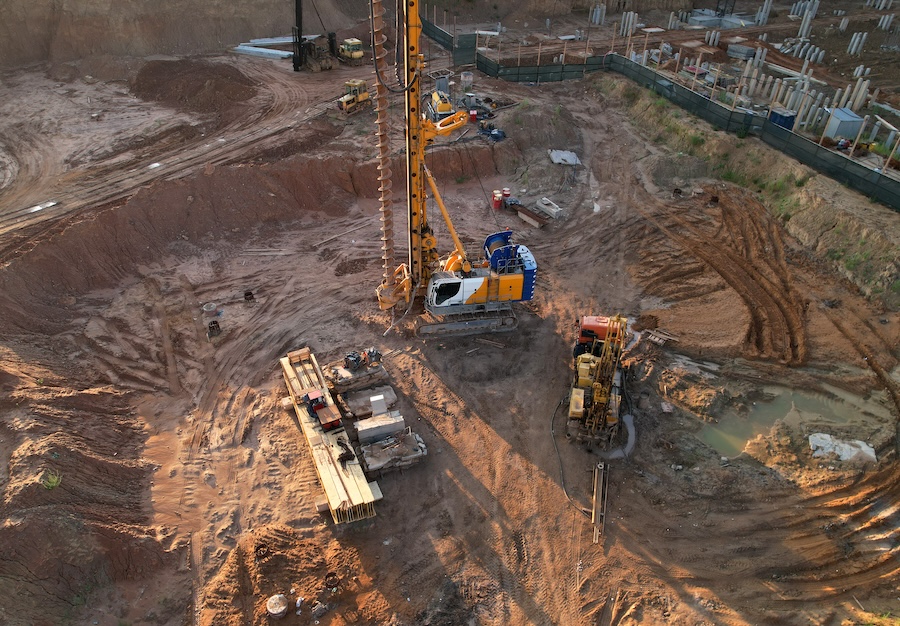Tailings Engineer: Crucial Experience for Sustainable Waste Monitoring in Mining
Wiki Article
The Interdisciplinary Approaches in the Geotechnical Market: Bridging the Gap In Between Design, Geology, and Environmental Scientific Research for Optimal Project End Results
The assimilation of design, geology, and environmental scientific research within the geotechnical sector is not merely advantageous; it is important for accomplishing optimal project results. This interdisciplinary cooperation cultivates a thorough understanding of facility website problems, enabling ingenious solutions to arise. By taking a look at crucial functions and effective study, we can discover the vibrant interplay that drives task success. Difficulties continue to be in efficiently managing these multidisciplinary initiatives, raising inquiries regarding prospective developments and future trends. What strategies might arise to promote this vital partnership and improve the effectiveness of geotechnical practices?Significance of Interdisciplinary Cooperation
The importance of interdisciplinary collaboration in the geotechnical industry can not be overstated. Efficient geotechnical jobs call for the integration of diverse experience from various fields, including design, geology, and environmental science. This collaboration makes certain that all aspects of a task are considered, leading to thorough remedies that resolve intricate obstacles.Interdisciplinary partnership promotes development by enabling professionals to share understandings and methods that might not appear when working in isolation (engineer of record). By leveraging the strengths of numerous self-controls, teams can recognize prospective risks, maximize style procedures, and boost the sustainability of geotechnical jobs. Such cooperation promotes an all natural understanding of site-specific problems, which is essential for accurate assessment and decision-making.
The intricacy of geotechnical projects necessitates a collaborated technique to problem-solving. Ultimately, interdisciplinary cooperation is vital for advancing best practices and accomplishing excellence in the geotechnical market.
Key Functions of Each Technique
Partnership amongst different disciplines is not just beneficial; it is vital for the effective implementation of geotechnical jobs. Each discipline-- engineering, geology, and ecological science-- plays a distinctive yet interconnected function that contributes to predict effectiveness and sustainability.Geotechnical engineers are mostly in charge of designing foundations and making certain architectural integrity. They assess soil and rock homes to assess load-bearing abilities, offering vital data for safe building and construction practices. Their know-how makes it possible for the solution of ingenious remedies to intricate obstacles.

Environmental scientists examine the potential influences of building and construction on ecological communities and water resources. They conduct environmental analyses and create reduction approaches to reduce negative impacts. By incorporating eco-friendly considerations, they make certain conformity with laws and promote sustainability throughout the task lifecycle.
Study of Effective Assimilation
Successful assimilation of geotechnical disciplines can be exemplified via various study that highlight the performance of synergy in attending to complicated design challenges. One remarkable instance is the construction of the Hong Kong-- Zhuhai-- Macau Bridge, where a collective approach entailing geotechnical design, geology, and ecological science was important. Engineers and rock hounds worked in unison to assess the seabed conditions and maximize the structure design, making certain security and minimizing ecological impact.One more impactful instance is the improvement of incline security in the San Francisco Bay Location, where an interdisciplinary group integrated geotechnical evaluation with ecological analyses. By incorporating hydrological studies and geological surveys, the team efficiently identified potential landslide dangers and applied effective mitigation measures, boosting security and sustainability.
In addition, the redevelopment of Brownfield websites typically calls for a multidisciplinary method. In one case in Chicago, collaboration among geotechnical designers, ecological scientists, and urban coordinators caused the effective remediation of contaminated dirt, permitting the secure change of the website right into an area park. These study highlight that interdisciplinary cooperation not just addresses technological difficulties however additionally cultivates cutting-edge remedies that profit both tasks and communities.
Obstacles in Multidisciplinary Projects

In addition, working with schedules and workflows amongst different teams can be bothersome, especially when each self-control has distinct task turning points and deliverables. This misalignment can cause hold-ups and boosted costs. The challenge of resource allowance also impends big; ensuring that specialized proficiency is available at vital points calls for cautious planning and foresight.
Finally, regulatory conformity poses another considerable difficulty. Each technique may encounter different governing structures, and lining up these requirements to satisfy project objectives can be lengthy and complicated. Attending to these difficulties necessitates strong management and reliable communication approaches to foster cooperation and make certain that multidisciplinary teams function cohesively towards shared goals.
Future Trends in Geotechnical Practices
As the geotechnical sector evolves, emerging fads geotechnical engineers are reshaping methods to resolve the challenges dealt with in multidisciplinary tasks - geotechnical engineers. One substantial fad is the increased combination of sophisticated technologies, such as synthetic intelligence and artificial intelligence, right into geotechnical evaluation and layout. These innovations enhance predictive modeling and danger evaluation, allowing designers to make even more educated decisions throughout the job lifecycle
Furthermore, the adoption of digital twins and real-time surveillance systems is coming to be more common. These devices facilitate recurring analysis of dirt conditions and structural efficiency, permitting prompt treatments when concerns emerge.
Verdict
In conclusion, the combination of engineering, geology, and environmental science is vital for achieving optimal end results in the geotechnical sector. Effective instance research studies show the advantages of this approach, while acknowledging the challenges encountered in multidisciplinary projects.The integration of engineering, geology, and environmental science within the geotechnical sector is not just beneficial; it is important for achieving ideal project end results. Efficient geotechnical tasks call for the integration of varied experience from numerous areas, consisting of engineering, geology, and ecological science.Browsing the intricacies of multidisciplinary projects in the geotechnical market offers numerous considerable obstacles.As the geotechnical market advances, emerging trends are reshaping methods to resolve the obstacles faced in multidisciplinary projects. Geotechnical engineers are significantly working together with environmental scientists to ensure that projects line up with sustainability goals and comply with regulative requirements.
Report this wiki page